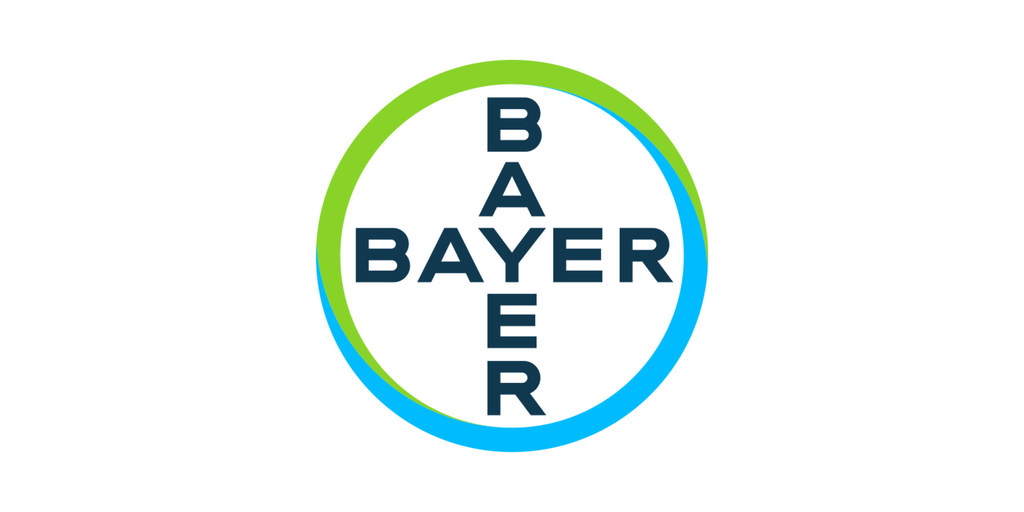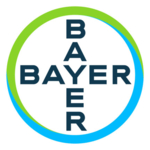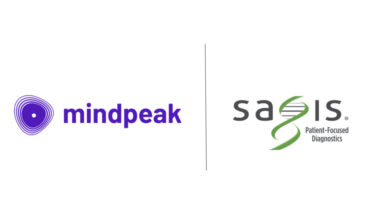Bayer Announces Primary Endpoint Achieved in Phase III FINEARTS-HF Cardiovascular Outcomes Study Investigating KERENDIA® (finerenone) in Patients with Heart Failure with Mildly Reduced or Preserved Ejection Fraction

- FINEARTS-HF met its primary endpoint,1 achieving a statistically significant reduction of the composite of cardiovascular death and total (first and recurrent) heart failure (HF) events, defined as hospitalizations for HF or urgent HF visits 2
- KERENDIA is the first non-steroidal, selective mineralocorticoid receptor antagonist (MRA) to meet a primary cardiovascular endpoint in a Phase III study investigating patients with HF with mildly reduced or preserved ejection fraction (LVEF>40%) 1
- KERENDIA already has established cardiovascular benefit (reduction in hospitalization for HF, CV death and non-fatal MI) in adults with chronic kidney disease (CKD) in type 2 diabetes (T2D)3, and this new topline data provides positive results in a different patient population not limited to CKD in T2D— patients diagnosed with HF (LVEF>40) 1
- The clinical data from FINEARTS-HF will be presented at the European Society of Cardiology (ESC) Congress 2024
- Bayer plans to discuss the data and submission for regulatory approval with the U.S. Food and Drug Administration (FDA)
WHIPPANY, N.J.–(BUSINESS WIRE)–Bayer announced today that FINEARTS-HF met its primary endpoint,1 achieving a statistically significant reduction of the composite of cardiovascular death and total (first and recurrent) heart failure (HF) events, defined as hospitalizations for HF or urgent HF visits. The randomized, double-blind, placebo-controlled, parallel-group, multi-center phase III cardiovascular outcomes study evaluated the efficacy and safety of KERENDIA® (finerenone) for investigational new use in patients with HF with a LVEF≥40%2 (left ventricular ejection fraction), a measurement that indicates how much blood the left ventricle of the heart pumps with each beat.4 In the FINEARTS-HF trial, no new safety signals were identified compared with those seen in previous studies with the compound.1
KERENDIA is approved to reduce the risk of cardiovascular death, non-fatal myocardial infarction, hospitalization for heart failure, sustained eGFR decline, and end-stage kidney disease in adult patients with CKD associated with T2D. 3
KERENDIA is a non-steroidal, selective mineralocorticoid receptor antagonist (MRA) with established cardiovascular benefit (reduction in hospitalization for HF, CV death and non-fatal MI) in adults with CKD in T2D,3 and this new topline data provides positive results in a different patient population not limited to CKD in T2D— patients diagnosed with HF (LVEF>40).1
Bayer will present the FINEARTS-HF data at the European Society of Cardiology (ESC) Congress 2024 in September and plans to discuss submission for regulatory approval with the U.S. Food and Drug Administration (FDA).
The FINEARTS-HF study is part of KERENDIA’s MOONRAKER program, which is expected to be one of the largest HF study programs to date with more than 15,000 patients in total and aims to establish a comprehensive understanding of KERENDIA in HF across a broad spectrum of patients and clinical settings.1
Heart failure is a complex clinical syndrome with symptoms and signs that result from any structural or functional impairment of ventricular filling or ejection of blood.5 Approximately 6.7 million adults in the U.S. suffer from HF, with about 55% having an LVEF ≥ 40%.6 Despite the high prevalence, guideline-directed medical treatment options for patients with HF with LVEF ≥ 40% are limited.7 This patient group is often balancing multiple comorbidities like obesity, hypertension and chronic kidney disease (CKD), adding additional considerations for physicians when considering treatment.5
“Bayer is determined to drive research and innovations that have the potential to become treatment options for diseases with high unmet medical need, including for patients with mildly reduced or preserved ejection fraction,” said Dr. Christian Rommel, Head of Research and Development at Bayer’s Pharmaceuticals Division.
About FINEARTS-HF2
FINEARTS-HF is a randomized, double-blind, placebo-controlled, multicenter, event-driven phase III study investigating the efficacy and safety of KERENDIA (finerenone) for the reduction of risk of cardiovascular death and heart failure (HF) events in patients with a diagnosis of symptomatic heart failure (New York Heart Association class II-IV) with a left ventricular ejection fraction (LVEF) of ≥40%, measured by local imaging measurement within the last 12 months as well as receiving diuretic treatment for at least 30 days prior to randomization. The primary endpoint of FINEARTS-HF was the composite of cardiovascular death and total (first and recurrent) HF events, defined as hospitalizations for HF or urgent HF visits.
Approximately 6,000 patients were randomized to receive either finerenone or placebo once daily for up to 42 months.2
With overall more than 15,000 patients, the MOONRAKER clinical trial program with finerenone, including FINEARTS-HF, is one of the largest HF study programs to date, and aims to establish a comprehensive body of evidence for finerenone across a broad spectrum of patients and clinical settings.1
About KERENDIA® (finerenone)3
KERENDIA is a non-steroidal mineralocorticoid receptor antagonist (MRA) and was approved by the U.S. Food and Drug Administration (FDA) in July 2021 to reduce the risk of sustained eGFR decline, end-stage kidney disease, cardiovascular death, non-fatal myocardial infarction, and hospitalization for heart failure in adults with CKD associated with T2D.
In adults with CKD associated with T2D, KERENDIA has been recommended to reduce the risk of hospitalization for heart failure by the American Diabetes Association (ADA) 8 and European Society of Cardiology (ESC).9
IMPORTANT SAFETY INFORMATION
CONTRAINDICATIONS:
- Concomitant use with strong CYP3A4 inhibitors
- Patients with adrenal insufficiency
WARNINGS AND PRECAUTIONS:
- Hyperkalemia: KERENDIA can cause hyperkalemia. The risk for developing hyperkalemia increases with decreasing kidney function and is greater in patients with higher baseline potassium levels or other risk factors for hyperkalemia. Measure serum potassium and eGFR in all patients before initiation of treatment with KERENDIA and dose accordingly. Do not initiate KERENDIA if serum potassium is >5.0 mEq/L.
Measure serum potassium periodically during treatment with KERENDIA and adjust dose accordingly. More frequent monitoring may be necessary for patients at risk for hyperkalemia, including those on concomitant medications that impair potassium excretion or increase serum potassium.
MOST COMMON ADVERSE REACTIONS:
- From the pooled data of 2 placebo-controlled studies, the adverse reactions reported in ≥1% of patients on KERENDIA and more frequently than placebo were hyperkalemia (14% versus 6.9%), hypotension (4.6% versus 3.9%), and hyponatremia (1.3% versus 0.7%).
DRUG INTERACTIONS:
- Strong CYP3A4 Inhibitors: Concomitant use of KERENDIA with strong CYP3A4 inhibitors is contraindicated. Avoid concomitant intake of grapefruit or grapefruit juice.
- Moderate and Weak CYP3A4 Inhibitors: Monitor serum potassium during drug initiation or dosage adjustment of either KERENDIA or the moderate or weak CYP3A4 inhibitor and adjust KERENDIA dosage as appropriate.
- Strong and Moderate CYP3A4 Inducers: Avoid concomitant use of KERENDIA with strong or moderate CYP3A4 inducers.
USE IN SPECIFIC POPULATIONS:
- Lactation: Avoid breastfeeding during treatment with KERENDIA and for 1 day after treatment.
- Hepatic Impairment: Avoid use of KERENDIA in patients with severe hepatic impairment (Child Pugh C) and consider additional serum potassium monitoring with moderate hepatic impairment (Child Pugh B).
Please click here for full Prescribing Information for KERENDIA.
About Heart Failure with LVEF ≥ 40%
Heart failure is a complex clinical syndrome with symptoms and signs that result from any structural or functional impairment of ventricular filling or ejection of blood.5 Approximately 6.7 million adults in the U.S. suffer from HF, with about 55% having an LVEF ≥ 40%.6 Despite the high prevalence, guideline-directed medical treatment options for patients with HF with LVEF ≥ 40% are limited.7 This patient group is often balancing multiple comorbidities like obesity, hypertension and chronic kidney disease (CKD).5 Symptoms can include shortness of breath, fatigue, chest discomfort and swelling in the lower body.10
About Bayer’s Commitment in Cardiovascular and Kidney Diseases
A leader in the cardiovascular (CV) space, Bayer upholds a long-standing commitment to delivering science for a better life by advancing research and treatment options. Bayer’s cardiorenal franchise, which began with the discovery and development of a number of vital therapies, now includes several products and compounds in various stages of preclinical and clinical development with the potential to impact the way that CV and kidney diseases are treated.
Bayer is investigating potential treatment approaches for areas of high unmet medical need. Currently, Bayer is investigating nine CVR-related projects in different stages of development, including heart failure (HF) and non-diabetic chronic kidney disease (CKD).11
Bayer is actively identifying resources and programs aimed at better understanding the real-world management of CKD, expanding screening and early care management for CKD, aligning with and supporting groups and institutions that share the common goals of improving health outcomes, promoting health literacy and education, and promoting research and initiatives that represent the diversity required to address the needs of all patients.
About Bayer
Bayer is a global enterprise with core competencies in the life science fields of health care and nutrition. In line with its mission, “Health for all, Hunger for none,” the company’s products and services are designed to help people and the planet thrive by supporting efforts to master the major challenges presented by a growing and aging global population. Bayer is committed to driving sustainable development and generating a positive impact with its businesses. At the same time, the Group aims to increase its earning power and create value through innovation and growth. The Bayer brand stands for trust, reliability and quality throughout the world. In fiscal 2023, the Group employed approximately 100,000 people and had sales of 47.6 billion euros. R&D expenses before special items amounted to 5.8 billion euros. For more information, go to www.bayer.com.
Find more information at https://pharma.bayer.com/
Follow us on Facebook: http://www.facebook.com/bayer
Follow us on X: @BayerPharma
Forward-Looking Statements
This release may contain forward-looking statements based on current assumptions and forecasts made by Bayer management. Various known and unknown risks, uncertainties and other factors could lead to material differences between the actual future results, financial situation, development or performance of the company and the estimates given here. These factors include those discussed in Bayer’s public reports, which are available on the Bayer website at www.bayer.com. The company assumes no liability whatsoever to update these forward-looking statements or to conform them to future events or developments.
___________________________________
1 Data on File.
2 Study to Evaluate the Efficacy (Effect on Disease) and Safety of Finerenone on Morbidity (Events Indicating Disease Worsening) & Mortality (Death Rate) in Participants With Heart Failure and Left Ventricular Ejection Fraction (Proportion of Blood Expelled Per Heart Stroke) Greater or Equal to 40% (FINEARTS-HF). Clinical trial registration No. NCT04435626. clinicaltrials.gov/study/NCT04435626?cond=NCT04435626&rank=1#study-plan.
3 Bayer Pharmaceuticals. Kerendia (finerenone) [package insert]. U.S. Food and Drug Administration. Available at: https://www.accessdata.fda.gov/drugsatfda_docs/label/2021/215341s000lbl.pdf. July 2024.
4 Kosaraju A, et al. Left Ventricular Ejection Fraction. StatPearls. April 2023. https://www.ncbi.nlm.nih.gov/books/NBK459131/
5 Heidenreich P, et al. 2022 AHA/ACC/HFSA Guideline for the Management of Heart Failure: A Report of the American College of Cardiology/American Heart Association Joint Committee on Clinical Practice Guidelines J Am Coll Cardiol. 2023. https://pubmed.ncbi.nlm.nih.gov/35379503/.
6 Bozkurt A, et al. Heart Failure Epidemiology and Outcomes Statistics: A Report of the Heart Failure Society of America. J Card Fail. 2023 Oct;29(10):1412-1451. doi: 10.1016/j.cardfail.2023.07.006. Epub 2023 Sep 26. PMID: 37797885; PMCID: PMC10864030.
7 Desai N, et al. Heart failure with mildly reduced and preserved ejection fraction: A review of disease burden and remaining unmet medical needs within a new treatment landscape. Heart Fail Rev. 2024; 29(3): 631–662. https://www.ncbi.nlm.nih.gov/pmc/articles/PMC11035416/.
8 American Diabetes Association (Section 10: Cardiovascular disease and risk management: standards of care in diabetes—2024.) Diabetes Care. 2024;47(Suppl. 1):S179–S218. doi:10.2337/dc24-S010.
9 Marx N, et al. ESC Guidelines for the management of cardiovascular disease in patients with diabetes. Eur Heart J. 2023;44(39):4043-4140. doi:10.1093/eurheartj/ehad192
10 American Heart Association. What is Heart Failure. Available at: https://www.heart.org/en/health-topics/heart-failure/what-is-heart-failure. July 2024.
11 Bayer Pharmaceuticals. Development Pipeline. U.S. Available at: https://www.bayer.com/en/pharma/development-pipeline.
COR-KER-US-0081-1 8/24
Contacts
Media:
Elaine Colón
Bayer Media Relations
[email protected]
+1-732-236-1587




